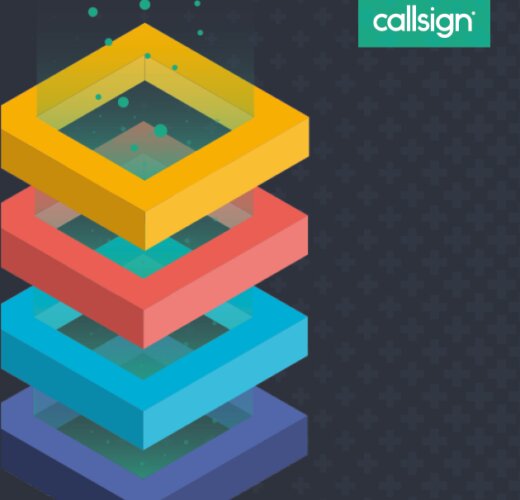The digital identity landscape is changing, particularly due to the impact 2020 has had on both workforce and consumer security. With this, businesses are starting to see the need for increased investment in digital identification technologies.
Gartner suggests that “by 2023, 75% of organizations will be using a single vendor with strong identity orchestration capabilities and connections to many other third parties for identity proofing and affirmation, which is an increase from fewer than 15% today.”[1]. However, today many organizations still view digital identity processes in three siloes of authentication, identity proofing and fraud detection. Gartner has published three Market Guides covering these core aspects of the digital identification journey.
Callsign are the only vendor included in all three of these Market Guides, we believe making us well positioned to help organizations bring security and service together, to build world-class customer experiences and reduce fraud to build long-term customer trust.
And this article explains why.
The trouble with point solutions
2020 has flipped the concept of digital transformation on its head. No longer is digital transformation a matter of 5-year plans and board rooms – it’s a reality. However, digital transformation isn’t just moving existing services online. It’s the precarious act of balancing customer satisfaction against rising fraud, regulation (particularly for those operating in the EU) and of course, cost reduction.
For many organizations this has also led to a reliance on point solutions to cater for each individual aspect of the digital journey. The fallout of this is that we seem to have adopted a guilty until proven innocent model, putting customers through rigorous authentication requests so that they can prove they aren’t acting with malicious intent. The outcome is clunky user journeys that either sacrifice experience for security or vice-versa. According to Gartner, “in the ‘experience economy,’ employee experience (EX) and customer experience (CX) are competitive differentiators“[2] and so not considering customer experience alongside security, can significantly damage an organization’s ability to build long-term trust with their customers.
So how can organizations build long-term relationships with their customers if from the off, customers are asked to prove they’re not acting with malicious intent?
Gartner recommends, “SRM leaders responsible for identity and access management and fraud detection should deliver a comprehensive fraud management strategy by viewing fraud detection, identity proofing and authentication capabilities as a cohesive toolset”[3]. This is the approach Callsign takes, combining each of these requirements within one solution that allows the individual identity to be the core focus, guaranteeing that both user experience and security are met throughout.
Time to put the individual at the heart of identity
Our approach to digital identification is to put the customer at the heart of the process, to positively identify that they are who they say they are. We provide a range of authentication measures that cater to all needs and requirements, contextual data analysis and simple code free orchestration tools, to deliver a single view of the customer. To do this we take a four layered approach
First line of defense: threat detection

Throughout the transaction, we’re constantly screening for bad actors. By checking the session is secure, we can provide greater assurance that the information provided is accurate.
We identify, and deal with threats, such as malware, bots, RATs, Telco Redirection Attacks, and compromised devices. We then highlight users who are deliberately attempting to mask their identity using privacy networks or proxies
Second line of defense: intelligence-driven (user) authentication

Knowing that the session is secure, we can then ensure that the user is who they say they are. This is where our unique ensembling capabilities come into play, as our machine learning models examine how likely it is that an interaction is genuine, based on a user’s previous interactions.
Our device fingerprinting can match users to their device with 99.99% accuracy, while our passive locational and behavioral biometric models identifies whether current activity is consistent with previous transactions. This information is then fused via an ensembling process into a single confidence score, reflecting how likely it is that the user is genuine.
Third line of defense: decisioning

This confidence score then dictates what happens next. If the score is low, it can be rejected outright, or passed to step-up authenticators. If authentication is granted, our Decisioning module allows you to orchestrate the rest of the user journey, which could include anything from credit checks to risk management controls.
Fourth line of defense: review and refine

We make it easy for non-technical audiences to review user journeys and analyze data effectively. With code-free platform management, decisions can be made in a matter of hours with real-time analytical data to back them up. In order to build seamless user experiences, businesses need the ability to review the effectiveness of their end-to-end user journeys, and easily improve banking processes where required.
We have been named a representative vendor in all three Gartner Market Guides because we believe that digital identity is more than just authenticating the user. It’s about offering tailored experiences that align customer need with your organizational strategy and goals.
This can’t be achieved through several disparate solutions - that may offer similar capabilities - but don’t work to a common goal of helping you build customer trust. We believe the only way to be able to offer that is through a single solution.
[1] Gartner Market Guide for Identity Proofing and Affirmation - Published 11 September 2020 - ID G00719390
[2] Gartner Market Guide for User Authentication - Published 26 June 2020 - ID G00729931
[3] Gartner Market Guide for Online Fraud Detection - Published 13 May 2020 - ID G00719387
Gartner does not endorse any vendor, product or service depicted in its research publications, and does not advise technology users to select only those vendors with the highest ratings or other designation. Gartner research publications consist of the opinions of Gartner’s research organization and should not be construed as statements of fact. Gartner disclaims all warranties, expressed or implied, with respect to this research, including any warranties of merchantability or fitness for a particular purpose.




